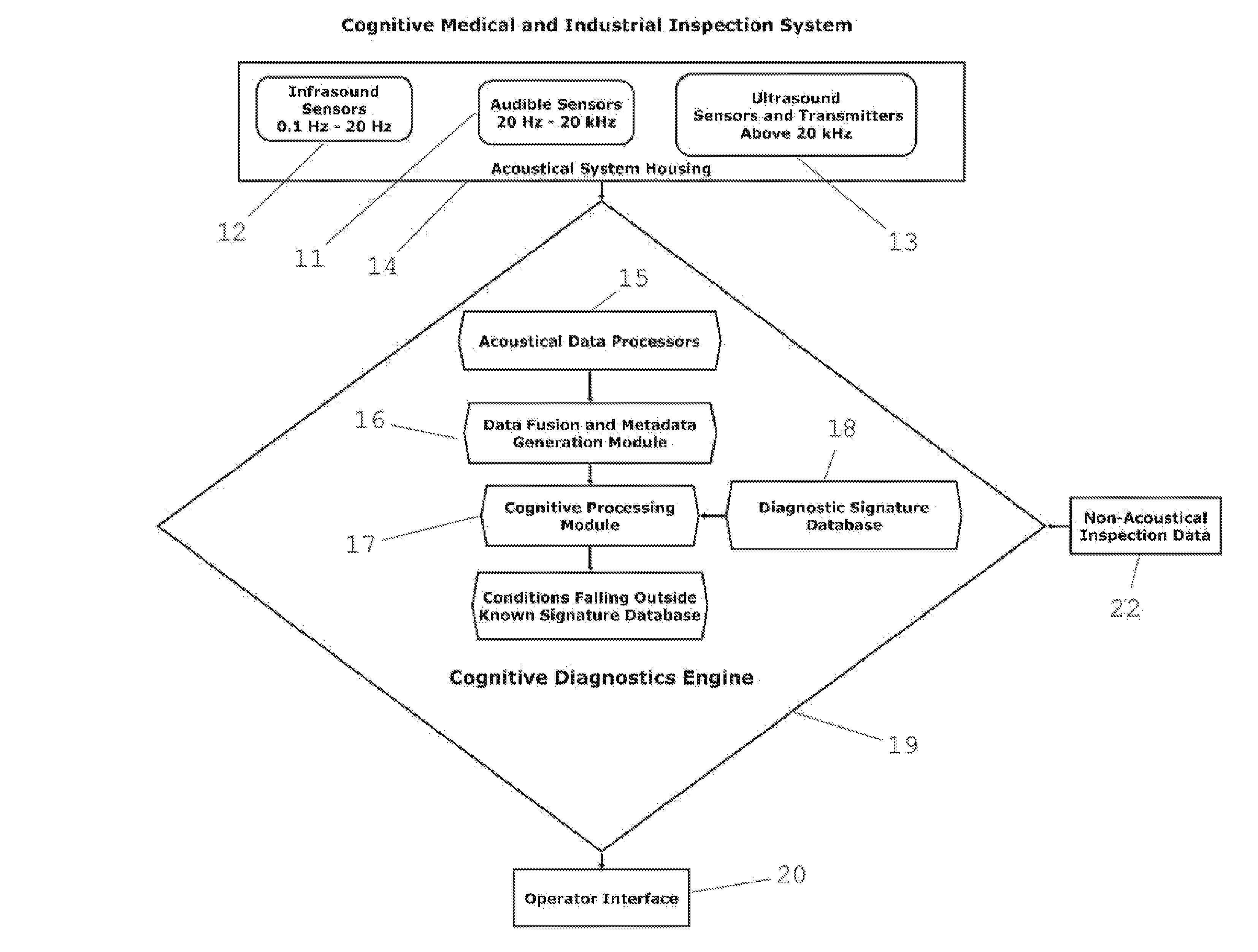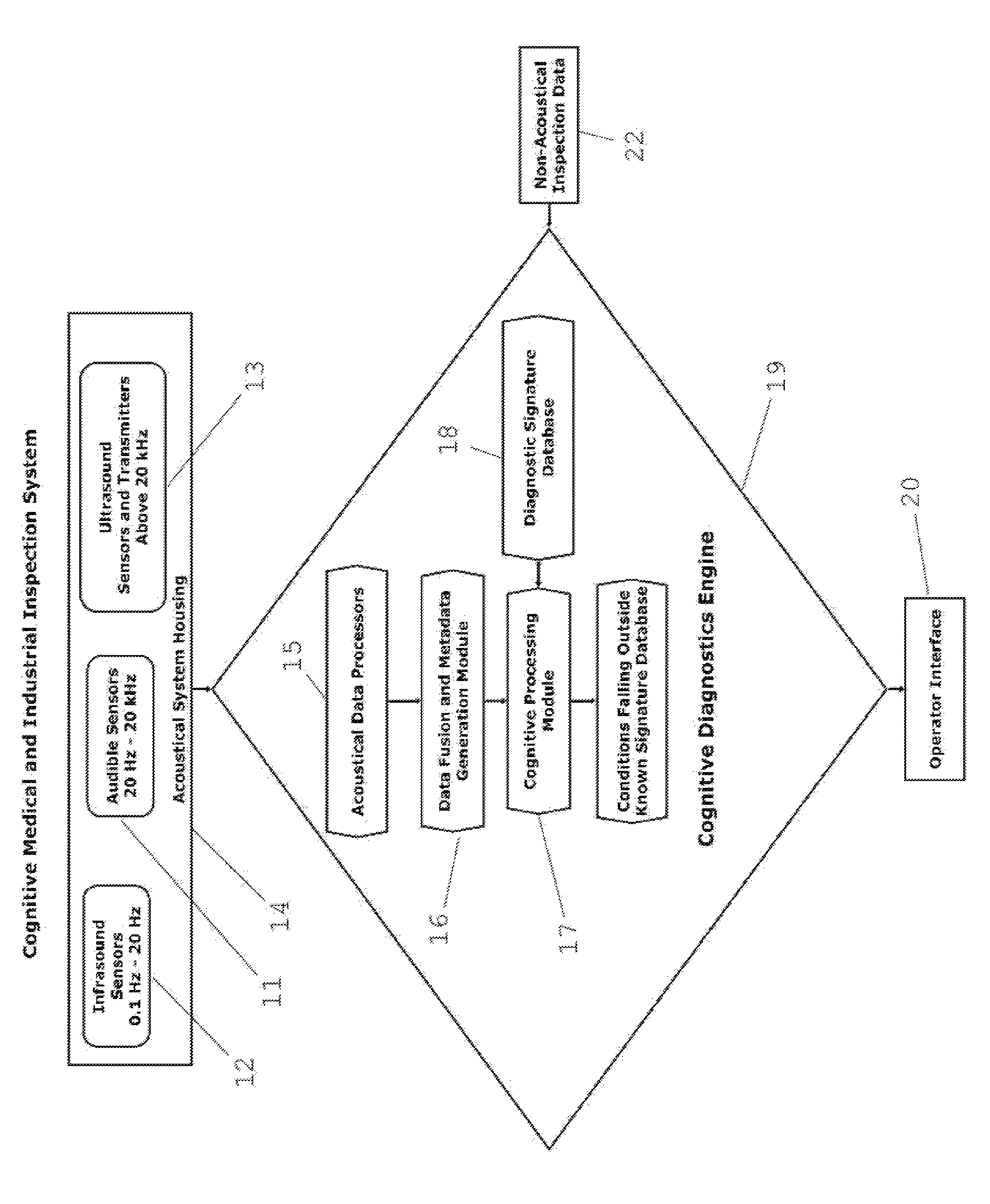Cognitive medical and industrial inspection system and method
a medical and industrial inspection and recognition technology, applied in the field of medical patients' inspection, can solve the problems of increasing adding expense and complexity, and reducing the accuracy of the overall inspection process, so as to reduce the cost, simplify the initial inspection and diagnosis, and minimize the false negative and false positive diagnostic results.
- Summary
- Abstract
- Description
- Claims
- Application Information
AI Technical Summary
Benefits of technology
Problems solved by technology
Method used
Image
Examples
Embodiment Construction
[0044]To provide an overall understanding certain illustrative embodiments will be described; however, it will be understood by one skilled in the art of inspection devices for medical and industrial applications; and skilled in the art of data fusion and cognitive artificial intelligence that the system and method described can be adapted and modified to provide systems and methods for other suitable applications and that additions and modifications can be made without departing from the scope of the system and method described herein.
[0045]FIG. 1 is a block diagram of a cognitive inspection system which combines cognitive artificial intelligence with fused infrasound sensor data in the 0.1 Hz-20 Hz frequency range, audible acoustical sensor data in the 20 Hz to 20 kHz frequency, ultrasound acoustical active and passive data above 20 kHz, data collected from other non-acoustical inspection devices and systems including, but not limited to, electrocardiography (EKG), computed-tomogr...
PUM
 Login to View More
Login to View More Abstract
Description
Claims
Application Information
 Login to View More
Login to View More - R&D
- Intellectual Property
- Life Sciences
- Materials
- Tech Scout
- Unparalleled Data Quality
- Higher Quality Content
- 60% Fewer Hallucinations
Browse by: Latest US Patents, China's latest patents, Technical Efficacy Thesaurus, Application Domain, Technology Topic, Popular Technical Reports.
© 2025 PatSnap. All rights reserved.Legal|Privacy policy|Modern Slavery Act Transparency Statement|Sitemap|About US| Contact US: help@patsnap.com


